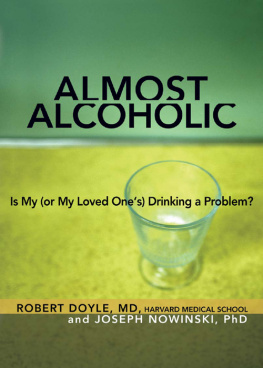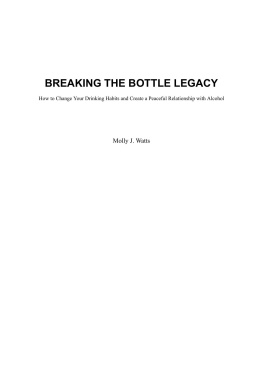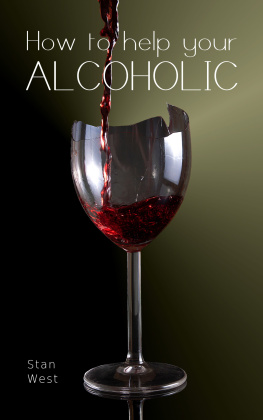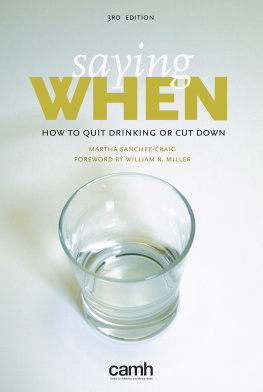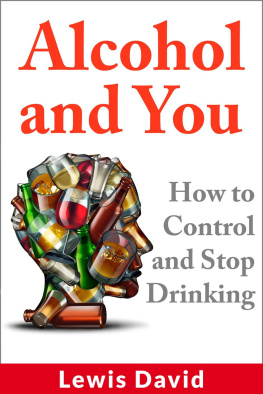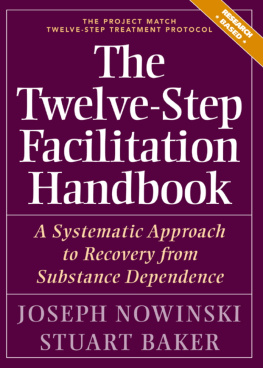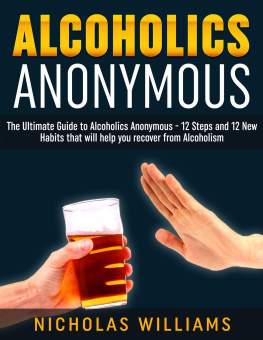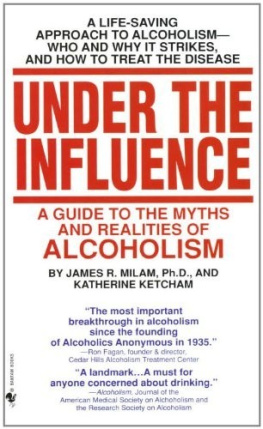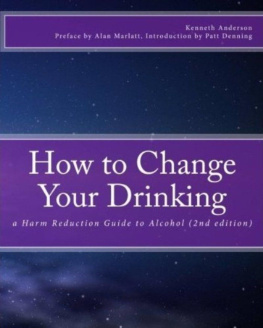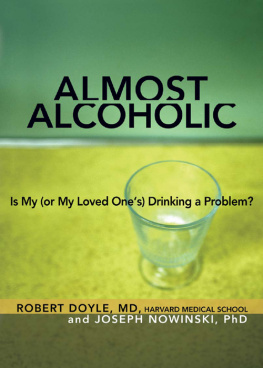Ph.D. Joseph Nowinski PhD - Almost Alcoholic: Is My
Here you can read online Ph.D. Joseph Nowinski PhD - Almost Alcoholic: Is My full text of the book (entire story) in english for free. Download pdf and epub, get meaning, cover and reviews about this ebook. year: 2012, publisher: Hazelden, genre: Romance novel. Description of the work, (preface) as well as reviews are available. Best literature library LitArk.com created for fans of good reading and offers a wide selection of genres:
Romance novel
Science fiction
Adventure
Detective
Science
History
Home and family
Prose
Art
Politics
Computer
Non-fiction
Religion
Business
Children
Humor
Choose a favorite category and find really read worthwhile books. Enjoy immersion in the world of imagination, feel the emotions of the characters or learn something new for yourself, make an fascinating discovery.
- Book:Almost Alcoholic: Is My
- Author:
- Publisher:Hazelden
- Genre:
- Year:2012
- Rating:4 / 5
- Favourites:Add to favourites
- Your mark:
- 80
- 1
- 2
- 3
- 4
- 5
Almost Alcoholic: Is My: summary, description and annotation
We offer to read an annotation, description, summary or preface (depends on what the author of the book "Almost Alcoholic: Is My" wrote himself). If you haven't found the necessary information about the book — write in the comments, we will try to find it.
Almost Alcoholic: Is My — read online for free the complete book (whole text) full work
Below is the text of the book, divided by pages. System saving the place of the last page read, allows you to conveniently read the book "Almost Alcoholic: Is My" online for free, without having to search again every time where you left off. Put a bookmark, and you can go to the page where you finished reading at any time.
Font size:
Interval:
Bookmark:

Robert Doyle, MD, Harvard Medical School
Joseph Nowinski, PhD

Hazelden
Center City, Minnesota 55012
hazelden.org
2012 by Harvard University
All rights reserved. Published 2012
Printed in the United States of America
No part of this publication may be reproduced, stored in a retrieval system, or transmitted in any form or by any meanselectronic, mechanical, photocopying, recording, scanning, or otherwisewithout the express written permission of the publisher. Failure to comply with these terms may expose you to legal action and damages for copyright infringement.
Library of Congress Cataloging-in-Publication Data
Doyle, Robert (Robert L.)
Almost alcoholic : is my (or my loved ones) drinking a problem? / Robert Doyle, Joseph Nowinski.
p. cm.
Includes bibliographical references.
ISBN 978-1-61649-159-8
Ebook ISBN 978-1-61649-425-4
1. Alcoholism. 2. AlcoholismPrevention. I. Nowinski, Joseph.
II. Title.
HV5060.D69 2012
362.292dc23
2011048213
Editors note
The names, details, and circumstances have been changed to protect the privacy of those mentioned in this publication.
This publication is not intended as a substitute for the advice of health care professionals.
Alcoholics Anonymous, AA, and the Big Book are registered trademarks of Alcoholics Anonymous World Services, Inc.
16 15 14 13 12 1 2 3 4 5 6
Cover design by Teresa Jaeger Gedig
Interior design and typesetting by Kinne Design

The Almost Effect series presents books written by Harvard Medical School faculty and other experts who offer guidance on common behavioral and physical problems falling in the spectrum between normal health and a full-blown medical condition. These are the first publications to help general readers recognize and address these problems.

For Angelina, Frances, Sandra, Ellen, and Elizabeth from R. D.
and
for Maggie, Becca, and Greg from J. N.
I once overheard a mother counseling her grown daughter to avoid dating a man she thought had a drinking problem. The daughter said, Mom, hes not an alcoholic! The mother quickly responded, Well, maybe not, but he almost is.
Perhaps youve heard someone, referring to a boss or public figure, say, I dont like that guy. Hes almost a psychopath!
Over the years, Ive heard many variations on this theme. The medical literature currently recognizes many problems or syndromes that dont quite meet the standard definition of a medical condition. Although the medical literature has many examples of these syndromes, they are often not well known (except by doctors specializing in that particular area of medicine) or well described (except in highly technical medical research articles). They are what medical professionals often refer to as subclinical and, using the common parlance from the examples above, what were calling the almost effect.
For example:
- Glucose intolerance may or may not always lead to the medical condition of diabetes, but it nonetheless increases your risk of getting diabeteswhich then increases your risk of heart attacks, strokes, and many other illnesses.
- Sunburns, especially severe ones, may not always lead to skin cancer, but they always increase your risk of skin cancer, cause immediate pain, and may cause permanent cosmetic issues.
- Pre-hypertension may not always lead to hypertension (high blood pressure), but it increases your risk of getting hypertension, which then increases your risk of heart attacks, strokes, and other illnesses.
- Osteopenia signifies a minor loss of bone that may not always lead to the more significant bone loss called osteoporosis, but it still increases your risk of getting osteoporosis, which then increases your risk of having a pathologic fracture.
Diseases can develop slowly, producing milder symptoms for years before they become full-blown. If you recognize them early, before they become fully developed, and take relatively simple actions, you have a good chance of preventing them. In many instances there are steps you can try at home on your own; this is especially true with the mental and behavioral health disorders.
So, what exactly is the almost effect and why this book? Almost Alcoholic is one of a series of books by faculty members from Harvard Medical School and other experts. These books are the first to describe in everyday language how to recognize and what to do about some of the most common behavioral and emotional problems that fall within the continuum between normal and full-blown pathology. Since this concept is new and still evolving, were proposing a new term, the almost effect, to describe problems characterized by the following criteria.
The problem
- falls outside of normal behavior but falls short of meeting the criteria for a particular diagnosis (such as alcoholism, major depression, antisocial personality disorder, or substance dependence);
- is currently causing identifiable issues for individuals and/or others in their lives;
- may progress to the full-blown condition, meeting accepted diagnostic criteria, but even if it doesnt, still can cause significant suffering;
- should respond to appropriate interventions when accurately identified.

All of the books in The Almost Effect series make a simple point: Each of these conditions occurs along a spectrum, with normal health and behavior at one end and the full-blown disorder at the other. Between these two extremes is where the almost effect lies. It is the point at which a person is experiencing real pain and suffering from a condition for which there are solutions if the problem is recognized.
Recognizing the almost effect not only helps a person address real issues now; it also opens the door for change well in advance of the point at which the problem becomes severe. In short, recognizing the almost effect has two primary goals: (1) to alleviate pain and suffering now and (2) to prevent more serious problems later.
I am convinced these problems are causing tremendous suffering, and it is my hope that the science-based information in these books can help alleviate this suffering. Readers can find help in the practical self-assessments and advice offered here, and the current research and clinical expertise presented in the series can open opportunities for health care professionals to intervene more effectively.
I hope you find this book helpful. For more information about other books in this series, visit www.TheAlmostEffect.com.
Julie Silver, MD
Assistant Professor, Harvard Medical School
Chief Editor of Books, Harvard Health Publications
The authors wish to express their appreciation to Julie Silver, MD, of Harvard Medical School and Harvard Health Publications, and to Sid Farrar of Hazelden Publications for their invaluable editorial assistance at every step of the process of producing this book, from its initial conceptualization to the final product. We also want to thank Iva Pravdova, MD, and Carol Dyson, RN, for sharing their insights on the generational effects of alcohol and substance abuse in families. Finally, wed like to thank our literary agent, Linda Konner, for her support of and commitment to this book and The Almost Effect series.
Font size:
Interval:
Bookmark:
Similar books «Almost Alcoholic: Is My»
Look at similar books to Almost Alcoholic: Is My. We have selected literature similar in name and meaning in the hope of providing readers with more options to find new, interesting, not yet read works.
Discussion, reviews of the book Almost Alcoholic: Is My and just readers' own opinions. Leave your comments, write what you think about the work, its meaning or the main characters. Specify what exactly you liked and what you didn't like, and why you think so.

